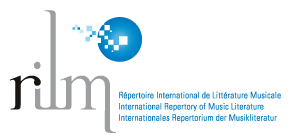The Censorship of Tango by the French Church in the Eve of the Great War (with a Post-scriptum by Erik Satie).
Keywords:
tango, censorship, Church, France, Erik SatieAbstract
The condemnation of tango in January 1914 by the archbishop of Paris, cardinal Léon- Adolphe Amette, and the apocryphal scene of pope Pius X watching the “devil’s dance” from his Vatican armchair before proposing to replace it by the furlana, the “pope’s dance”, are legendary episodes of the history of the genre. This article explores them from a historical perspective based on unpublished archives of the Paris diocese, and on a collection of Semaines Religieuses, the official reviews of all the dioceses of France. These sources show that the international campaign against the dance from the end of the world was launched by the French episcopate as part of its political battle against the Republican government that in 1905 had enacted the Law of Separation of the State and the Church. By so doing, as in other cases of moralist censorship, the bishops turned the tango into a powerful and vastly shared erotic fantasy. And also, in a source of inspiration for composers like Erik Satie, who in the sketches for his 1914 Tango perpétuel describes the devil dancing the tango while “sitting in an armchair”.
Downloads
Published
Issue
Section
License
ATTRIBUTION-NONCOMMERCIAL 4.0 INTERNATIONAL
https://creativecommons.org/licenses/by-nc/4.0/
You are free to:
- Share — copy and redistribute the material in any medium or format
- Adapt — remix, transform, and build upon the material
- The licensor cannot revoke these freedoms as long as you follow the license terms.
Under the following terms:
- Attribution — You must give appropriate credit , provide a link to the license, and indicate if changes were made . You may do so in any reasonable manner, but not in any way that suggests the licensor endorses you or your use.
- NonCommercial — You may not use the material for commercial purposes .
- No additional restrictions — You may not apply legal terms or technological measures that legally restrict others from doing anything the license permits.
Notices:
You do not have to comply with the license for elements of the material in the public domain or where your use is permitted by an applicable exception or limitation .
No warranties are given. The license may not give you all of the permissions necessary for your intended use. For example, other rights such as publicity, privacy, or moral rightsmay limit how you use the material.







